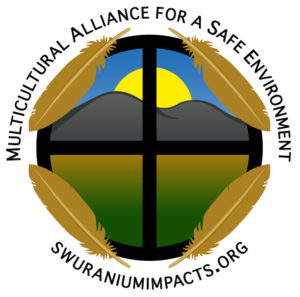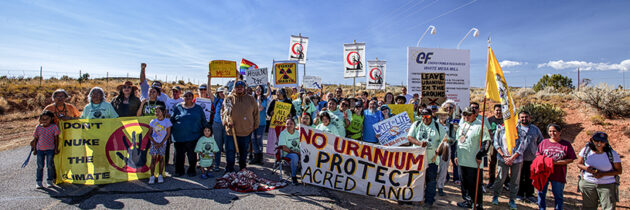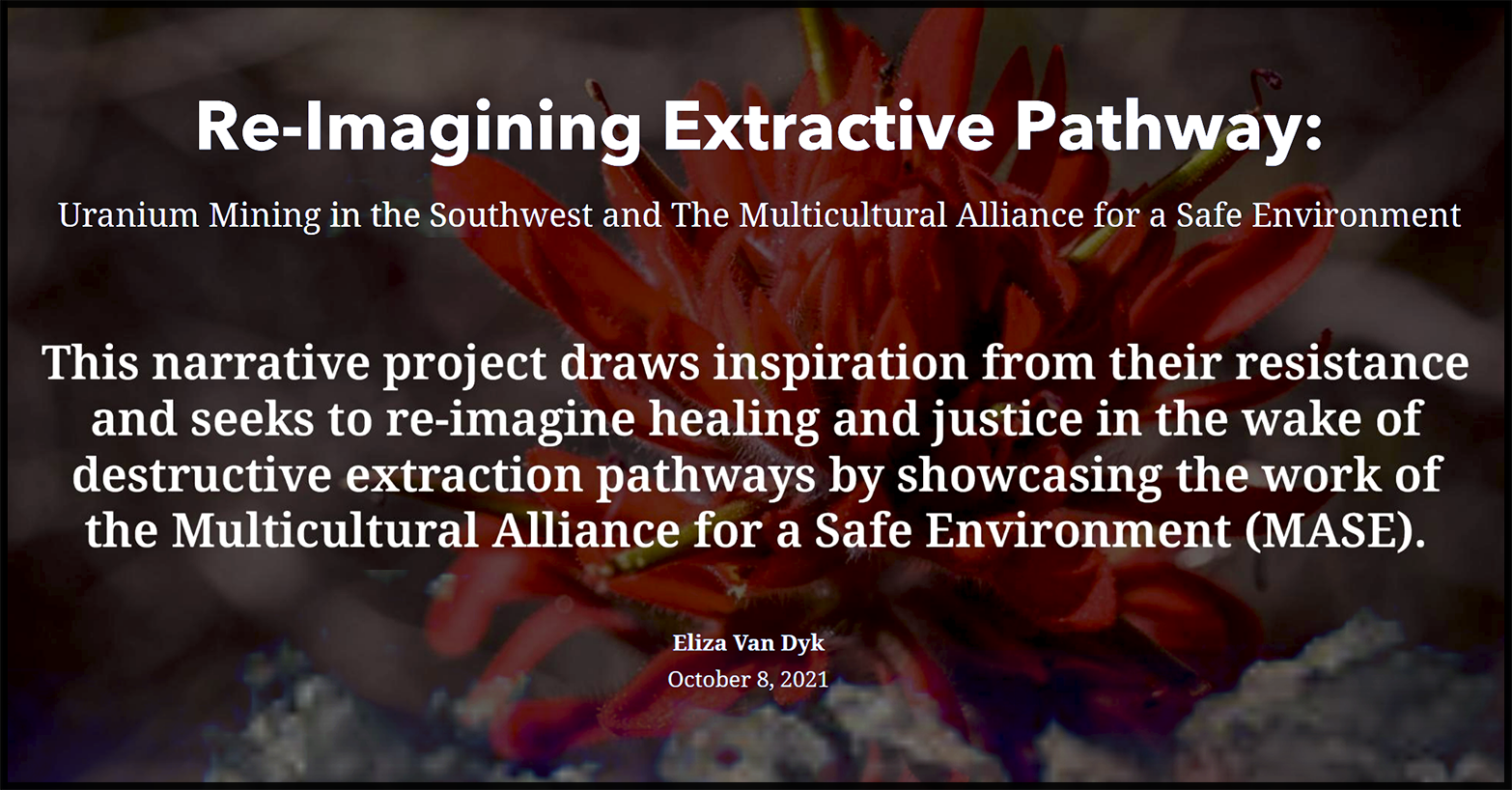Tribal Leaders Speak out at White Mesa Spiritual Walk
ORIGINAL ARTICLE: GRAND CANYON TRUST | URANIUM BLOG on October 17 2023
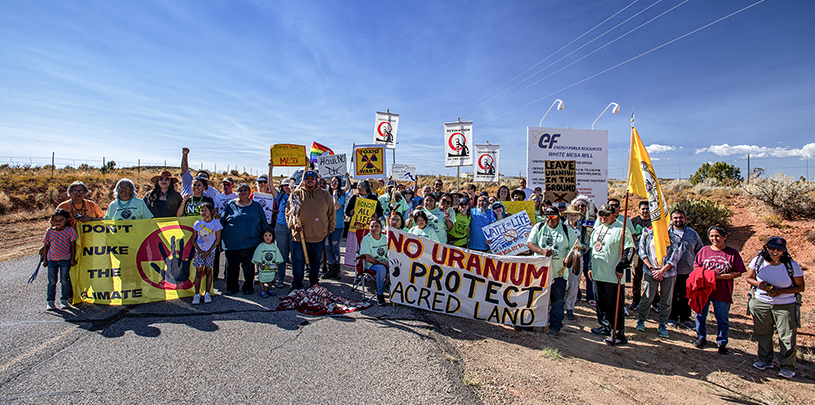
by Tim Peterson, Cultural Landscapes Director
The day before the second anniversary of Bears Ears National Monument’s restoration and two days before Indigenous Peoples’ Day, on a warm and clear Saturday, tribal members from many Indigenous communities and their allies and supporters gathered for the annual White Mesa spiritual walk and protest on October 7, 2023.
The walk, sponsored by the Ute Mountain Ute Tribe and the White Mesa Concerned Community group, travels from the community to the gates of the White Mesa uranium mill in southeast Utah.
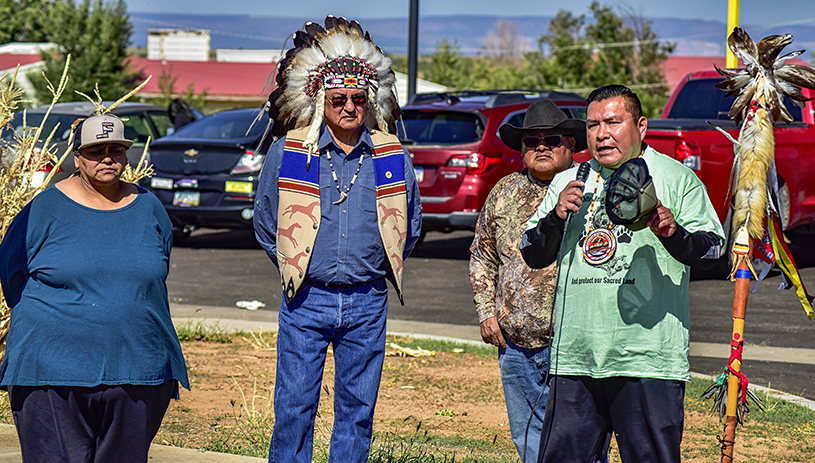
“This mill isn’t just our problem. It’s everybody’s problem…it’s going to affect us, all of us, in the long run. We should have thousands of people upset about this,” said Ute Mountain Ute Tribal Councilman Conrad Jacket.
Health concerns loom in shadow of uranium mill near Bears Ears
Located just one mile east of Bears Ears National Monument and a few miles from the Ute Mountain Ute Tribe’s White Mesa community, the White Mesa Mill is the United States’ last operating conventional uranium mill. It was licensed in 1980 to process uranium ore from around the Four Corners region. Back then, it was projected to operate for around 15 years, then close and clean up. Now, more than 40 years later, the mill is still operating, and community members are concerned for the fate of their land, air, and especially their water.
“This is a big thing for us and we don’t want them to expand, because we can smell … that sulfur smell…when we go by, you can smell it. It’s not a good smell. And a lot of our people got sick and we don’t know if it’s due to that,” said White Mesa Concerned Community member Michael Badback.
How has the mill stayed open so long? According to an executive at Energy Fuels Resources, the company that owns the mill, the “White Mesa [Mill] barely makes money. It’s always at risk of permanent closure.” Instead of closing when milling local uranium ore was no longer profitable, past and present owners of the mill have continuously reinvented their business model to keep operating.
The mill turns to radioactive waste
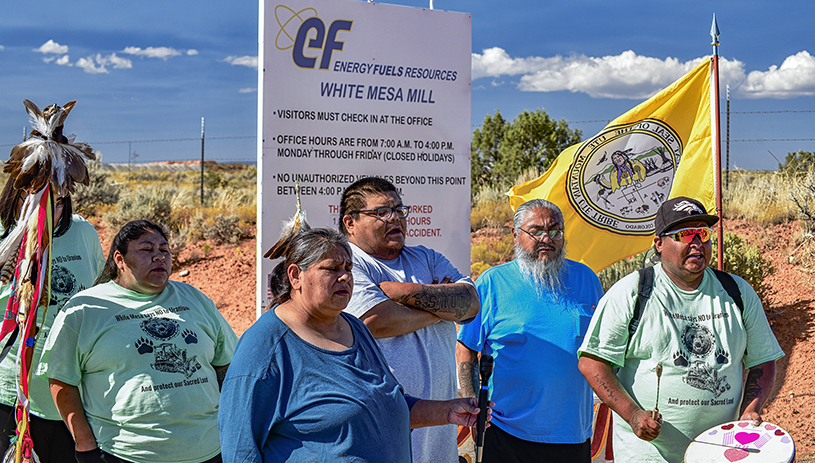
First, the White Mesa Mill began accepting radioactive waste from around the country and the world, often to pocket hefty disposal fees on the order of $5 to $15 million per year, according to Energy Fuels’ CEO.
Since the late 1980s, more than 700 million pounds of radioactive waste have been processed and dumped at the mill. The mill’s owners call this waste “alternate feed.”
“The state of Utah does not give a care. This is the place where they want to dump their waste. And not only the waste in America… waste…from Japan, from Europe,” explained Councilman Jacket.
The mill retools again
Now, the mill’s owner is making a play to enter the rare earth elements processing market. Since 2021, the mill has been producing a mixed rare earth carbonate that has to be shipped all the way to Estonia to be further refined. But they’re making plans, buying equipment, and retooling the mill.
So far, Utah regulators have done nothing to involve the public in another transformation that could keep an old uranium mill open even longer.
Lives are more important than money
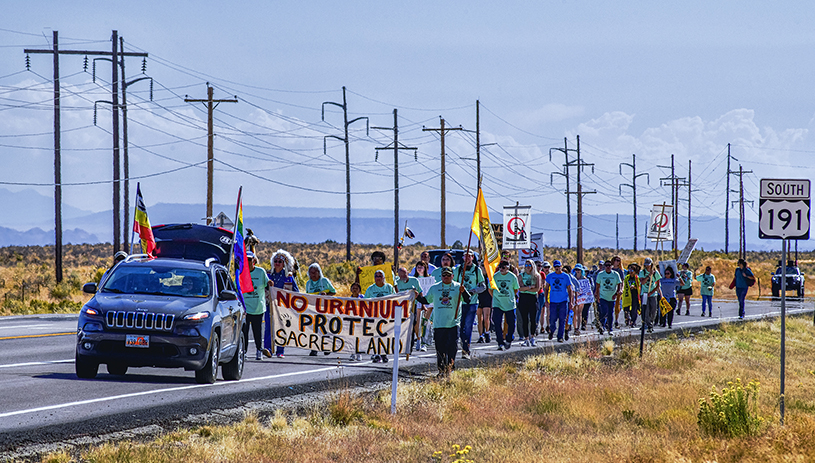
At the community center, White Mesa Concerned Community leader Yolanda Badback welcomed those who came to walk. Councilman Jacket and Chairman Heart offered remarks, and Ute Mountain Ute Councilman and White Mesa Representative Malcolm Lehi spoke to the crowd in the Ute language.
“…the Ute Mountain Ute tribal government is in full support of protecting the community of White Mesa,” Chairman Heart told the crowd. “We’re facing health disparities in Indian Country, huge health disparities, not only diabetes, but cancer. And if this water is affecting this community of White Mesa, then it is a big concern. [Mill owner] Energy Fuels is looking at it from a profit margin, and so is Utah. I do not think money should be put before the lives of tribal members,” Heart continued. “Even if this community is a small community, it has to have [the] same equity of healthcare and healthcare services and take care of and protect the Utah citizens, as White Mesa community [members] are Utah citizens.”
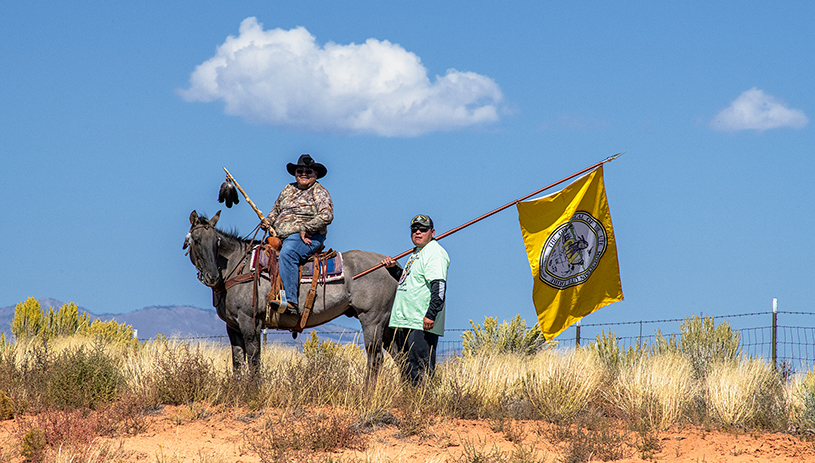
After the five-mile spiritual walk, near the gates of the mill, Chairman Heart addressed the crowd again.
“Yes, things take time,” Heart acknowledged. “It doesn’t happen overnight, doesn’t happen over a month, a year, it takes time…It takes time to educate people, people from the … Environmental Protection Agency, from the Nuclear Regulatory Commission, to hold this mill accountable. It’s not just about money, it’s about the lives, each one of the lives that crossed this road and traveled this road. And this mill here is not in the best interest of this community, and they need to move it, close it, put it someplace else where it has no effect to life, water, or the environment. That’s what we ask.”
As uranium prices climb and a long-dormant domestic uranium industry threatens to start up again, the White Mesa Mill and the White Mesa Ute community are at the center of an epic struggle for environmental justice.
In the words of Chairman Heart: “We want to have healthy lives. We want to have access to clean water. We want to have resources for the future of our children and grandchildren that are not here yet.”
